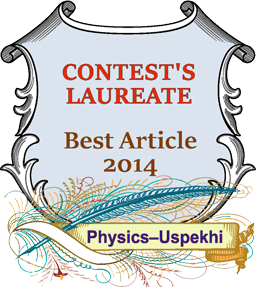 |
RSS feeds |
|
|||||
| Issue 4, 2024 |
|
||||||
|
|
|
||||||
Issues/2014/January |
← → |
| Reviews of topical problems |
Long-term dynamic structural memory in water: can it exist?
Institute for Theoretical and Experimental Biophysics, Russian Academy of Sciences, Institutskaya str. 3, Pushchino, Moscow Region, 142290, Russian Federation

There is no experimental evidence to support the hypothesis that water retains a memory of mechanical, magnetic and electromagnetic influences it has been exposed to and of substances it has dissolved. After its solutes have been fully removed by repeated dilutions, the water does not remember of having contained them or of the external physical influences exerted upon it. There is no arguable reason that water should have a molecular information matrix capable of serving as a long-term memory.
|
PACS: 07.57.−c, 61.20.−p, 65.20.−w, 83.10.Mj, 89.70.Cf ()
DOI: URL: https://ufn.ru/en/articles/2014/1/b/  000334343500002 000334343500002  2014PhyU...57...37I 2014PhyU...57...37I Citation: Ivanitskii G R, Deev A A, Khizhnyak E P "Long-term dynamic structural memory in water: can it exist?" Phys. Usp. 57 37–65 (2014) Received: 25th, April 2013, revised: 30th, July 2013, accepted: 2nd, August 2013 Оригинал: Иваницкий Г Р, Деев А А, Хижняк Е П «Может ли существовать долговременная структурно-динамическая память воды?» УФН 184 43–74 (2014); |
|
© 1918–2024 Uspekhi Fizicheskikh Nauk Email: ufn@ufn.ru Editorial office contacts About the journal Terms and conditions |